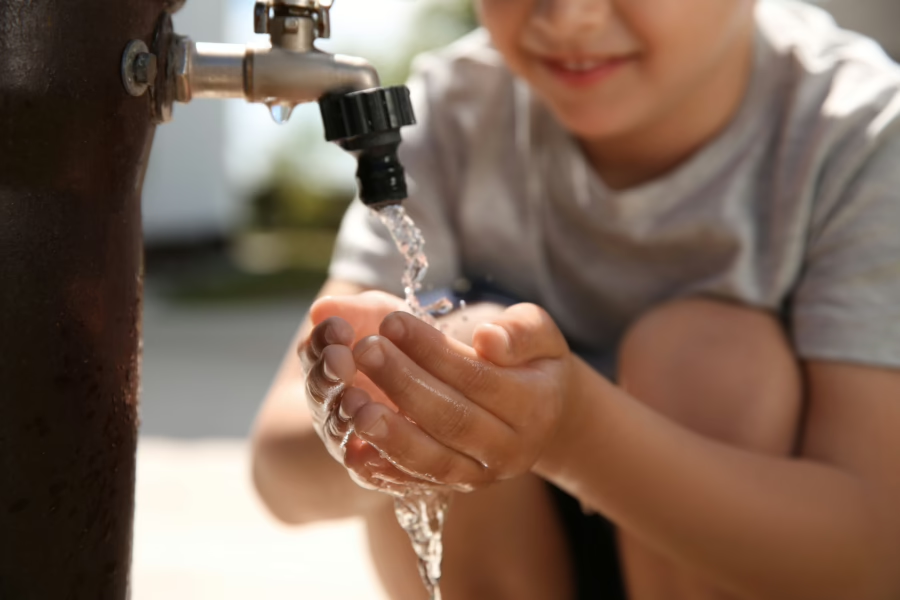“It’s the 21st century and there are still people in America who have to haul water in each morning and haul wastewater out every night.”
Communities living without access to water and sanitation—more than two million people in the United States—have known for decades that water access is critical to public health. Without basic services, communities are more vulnerable to a range of health risks, from water-borne infections to diabetes. Now, as the nation faces Covid-19, the need for safe, clean water in every home is more urgent than ever. Access to basic services is the foundation for building community resilience to crises.
On World Plumbing Day, March 11th, the US Water Alliance held a congressional briefing on water access in the US, in partnership with DigDeep, the International Association of Plumbers and Mechanical Officials (IAPMO), and the Rural Community Assistance Partnership (RCAP). The briefing sparked a dialogue on the role of the federal government in advancing universal water access, and shared the findings of the Alliance and DigDeep’s recently released report, Closing the Water Access Gap in the United States. A panel featuring speakers Jonathan Nelson (Community Water Center), Emma Robbins (DigDeep), and Ari Neumann (Rural Community Assistance Corporation) highlighted promising strategies that community organizations and technical assistance providers are developing to connect people to infrastructure (see panel pictures below).

While some might imagine that lack of water access only affects isolated individuals in remote areas, the panelists made it clear that this is a systemic crisis that reflects decades of disinvestment in infrastructure. In regions like California’s Central Valley and the Navajo Nation in the Southwest, infrastructure was never developed, or it has not been maintained and expanded. For some residents, this means that they must rely on unsafe water from untested wells, or haul water home every few days. Emma Robbins pointed out that beyond affecting communities’ physical health, the lack of access to services “affects their mental health, self-esteem, and dignity.”
The challenges are significant, but there are many opportunities for policymakers, government agencies, technical assistance providers, and other stakeholders to help develop solutions. Communities themselves are rising to the challenge to advocate for policy change, set up water delivery systems, and ensure that the most vulnerable are connected to basic services. Outside stakeholders can support their efforts by approaching the work as allies, and by following the leadership of those that have lived with the challenge for decades. Strategies that are developed through creative collaboration, and are responsive to the geographical context, are more likely to succeed than “copy-paste” fixes. As Jonathan Nelson pointed out, “often solutions are reduced to an engineering problem – but if we’re not being intentional about building trust we’ll fall flat.”
Organizations and government agencies can also work to ensure that it is safe for residents to seek help with water access issues by removing punitive policies; for example, some jurisdictions fine residents for having malfunctioning septic systems. In other regions, residents are wary of seeking help because of their immigration status.
One of the most urgent needs in communities living without water access is capacity building for small water systems. Water systems in these communities—when they are present at all—are often in need of additional staff and financial capacity. In some cases, systems are run by a part-time, volunteer staff person. Technical assistance providers like RCAP and RCAC help small systems apply for funding, manage operations, become financially sustainable, and comply with regulations, and the need for their services outpaces existing capacity. Supporting small water and wastewater systems can also be an opportunity to create employment in communities. System regionalization, or consolidation, is another promising strategy for building capacity, which can include multiple utilities merging to form a single system; areas that lack service connecting to a nearby system; or systems partnering on management. The federal government can support system capacity by increasing funding for technical assistance and creating incentives for consolidation.
Expanding funding options is a key strategy for supporting the expansion of the promising practices being developed to close the water access gap. In addition to funding technical assistance, the federal government can expand operations and maintenance funding and offer ample grants as well as loans. Many federal funding programs are restricted to utilities and government entities; making funding available to the nonprofits and community-based organizations that are doing the work of a water service provider would allow them to scale up. Other stakeholders, like philanthropy and nontraditional lenders with community ties, can also contribute to making more funding available.

As the nation prepares for Covid-19, it is essential to prioritize solutions for communities living without water access. Providing basic services to all will keep communities healthier during this crisis and prepare them to weather future risks. Water access challenges are solvable with the resources and expertise that the US has at its disposal.
For more information on the role that federal policymakers can play in closing the water access gap, see this policy brief on the report’s findings and key recommendations .


